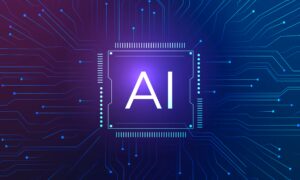Welcome to a world where privacy is no longer a luxury, but a necessity. The evolution of technology has paved the way for groundbreaking advancements that not only empower users like never before but also safeguard their personal information with utmost precision. In this era of Web3 technologies, we embark on a journey delving into the very essence of how these remarkable innovations have reshaped the digital landscape, enabling individuals to take back control of their data and liberate themselves from the clutches of centralized authority. Prepare to be enlightened as we unravel the true power behind Web3 and its unrivaled potential in revolutionizing online interactions while protecting your privacy at every step.
Introduction to Web3 Technologies
Web3 technologies are the next generation of web-based technologies that aim to empower users and enhance privacy. These technologies include decentralized applications (dapps), decentralized storage, and decentralized organizations.
Dapps are distributed applications that run on a network of computers, rather than on a single server. They are often designed to be censorship-resistant and to give users control over their data.
Decentralized storage is a way of storing data that is not controlled by any central authority. It is usually provided by a network of computers, rather than by a single server. Decentralized storage is often more secure and resilient than centralized storage, as it is not vulnerable to the same type of attacks.
Decentralized organizations are online platforms that allow people to cooperate without the need for a central authority. They are often designed to be more efficient and transparent than traditional organizations.
Features and Benefits of Web3
Web3 is the third generation of web technology that is currently in development. It is designed to provide a more decentralized and user-centric web experience. The main features and benefits of Web3 include:
Improved security and privacy: One of the primary goals of Web3 is to improve security and privacy for users. It does this by using data encryption and decentralized storage methods.
Increased censorship resistance: Another goal of Web3 is to make it more difficult for government or other groups to censor content. This is achieved through the use of decentralized networks and technologies like blockchain.
improved performance : web3 promises faster loading times and improved efficiency compared to previous generations of web technology.
Greater user control: One of the most unique features of Web3 is that it gives users more control over their data and online activity. This includes the ability to choose which applications have access to their data, as well as being able to share data with others on a more peer-to-peer basis.
How Web3 Enhances Privacy
Web3 technologies enhance privacy in several ways. By decentralizing data storage and using peer-to-peer networking, web3 technologies make it more difficult for government agencies and other large organizations to track and spy on individuals. Additionally, many web3 applications are built with privacy-enhancing features like encryption and anonymity tools that make it harder for third parties to snoop on users’ activities.
Web3 technologies provide a more robust and private online experience for users. With the increased use of these technologies, we can expect to see even more improvements in privacy protection in the future.
Risks, Challenges, and Opportunities of Web3 Technologies
Web3 technologies are powerful tools that can help users protect their privacy and maintain control over their online data. However, these technologies also come with risks and challenges.
One of the biggest risks associated with Web3 technologies is the potential for hacks and attacks. Because these technologies are still relatively new, they haven’t been thoroughly tested and there are still many unknowns. This makes them a prime target for attackers who may be looking to exploit vulnerabilities.
Another challenge facing Web3 technologies is scalability. As more and more people begin to use these technologies, it’s important that they’re able to scale in order to meet demand. Otherwise, the system could become overloaded and unavailable for users.
Despite the risks and challenges, there are also many opportunities that come with Web3 technologies. For example, these technologies have the potential to revolutionize the way we interact with the internet. By giving users more control over their data, they can help create a more decentralized web that’s less susceptible to censorship and manipulation. Additionally, Web3 technologies can help improve efficiency by automating tasks that are currently manual or time-consuming.
Ultimately, whether or not Web3 technologies will be successful depends on how well they address the risks and challenges while capitalizing on the opportunities. If done right, they have the potential to empower users and enhance privacy in a big way.
Applications of Web3 Technologies
The internet as we know it is changing. It’s evolving into something new, something better, and something more private and secure. This new stage in the internet’s evolution is being powered by a suite of technologies collectively known as Web3.
Web3 technologies are those that empower users and enhance privacy. They include things like decentralized applications (DApps), blockchain wallets, and protocols that make the internet more secure.
Decentralized applications are one of the most important aspects of Web3. They are apps that run on a decentralized network, rather than a single server. This makes them more resistant to attacks and censorship, and ensures that users retain control over their data.
Blockchain wallets are another key component of Web3. These allow users to store their cryptocurrencies securely, and also facilitate transactions on the blockchain. Blockchain wallets give users complete control over their funds, and allow them to transact without revealing their identity.
Protocols like the Inter-Planetary File System (IPFS) and Transport Layer Security (TLS) make the internet more secure. IPFS allows for decentralization of web content, making it harder for censors to remove information from the internet. TLS ensures that data is encrypted when transmitted between devices, making it much harder for hackers to eavesdrop on communications.
Summary & Conclusion
Web technologies are constantly evolving to enable users to do more online while enhancing privacy protection. The latest web technologies include features that empower users by giving them more control over their online activities, while also providing new ways to improve privacy.
For example, the latest version of the web browser Mozilla Firefox includes a feature called “Private Browsing” which allows users to browse the web without saving any information about their browsing history or cookies. This means that users can surf the web confidentially, without having to worry about their browsing history being tracked or stored.
In addition, new versions of web browsers are incorporating Do Not Track (DNT) technology, which gives users the ability to opt-out of having their browsing data collected by third-party advertising companies. This is a major development in the fight for online privacy, as it gives users more control over how their data is used and collected.
It is clear that web technologies are becoming more sophisticated and user-friendly, while also providing enhanced privacy protections. As these technologies continue to evolve, they will no doubt become even more powerful tools for both users and businesses alike.





























